
|
|
|
カテゴリ:鉄道旅の記録
瀬戸内しまなみ海道は広島県尾道市から愛媛県今治市までを、瀬戸内海に浮かぶ芸予諸島の7つの島(向島、因島、生口島、大三島、伯方島、大島、馬島)を経由する高速道路。高速道路に並行して、島と島をつなぐ橋、および各島の一般道から成る「しまなみ海道サイクリングロード」が整備され、多くのサイクリストたちが訪れている。 「しまなみ海道サイクリングロード」は、日本のサイクリングロードとしては初めて、世界的に有名なガイドブックである「ロンリープラネット」「ミシュランガイド」の両方に紹介された。また、アメリカ合衆国のテレビ局、CNNでも「世界で最も素晴らしいサイクリングロードの1つ」であると紹介された。 サイクリングロードは1999(平成11)年に開通、高速道路は2006(平成18)年全線開通した。瀬戸大橋、明石海峡大橋・大鳴門橋とともに、本州四国連絡橋の1つに数えられる。 尾道駅前港からは、生口島行きの船「シトラス」に乗り、終点の生口島瀬戸田港を目指す。尾道駅前港~生口島瀬戸田港間の所要時間は約45分。 港から東方向へ歩いて10分ほどのところにある耕三寺を参拝。 耕三寺は昭和年間に建立された比較的新しい寺。初代住職、耕三寺耕三(こうさんじ・こうぞう、1891 - 1970)和上が母親の菩提寺として、母親の故郷である生口島に建立した。また、境内を日本各地の著名な歴史的建造物を模した寺を造り、生口島が誇る文化財にしたいという耕三和上の思いも込められている。 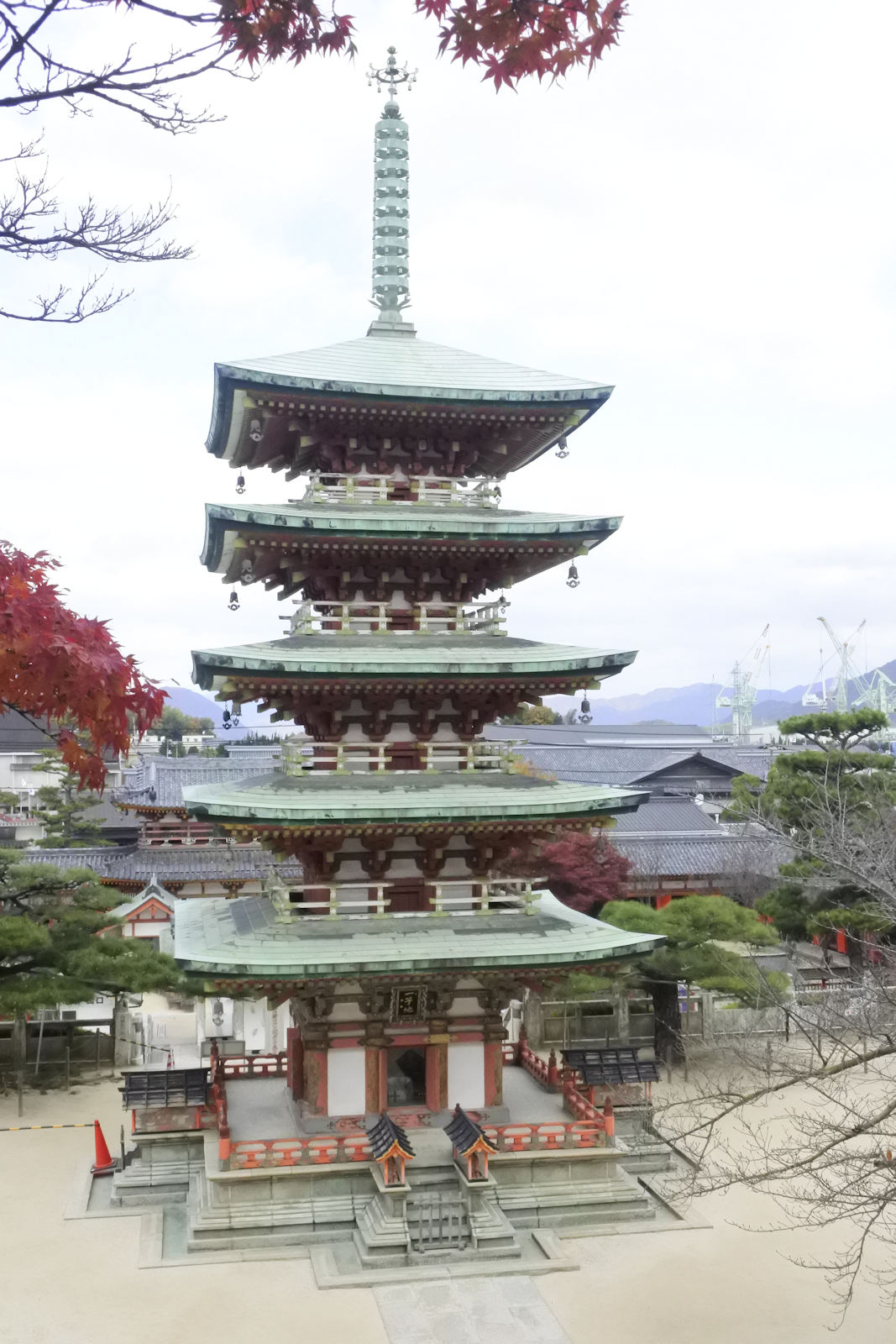 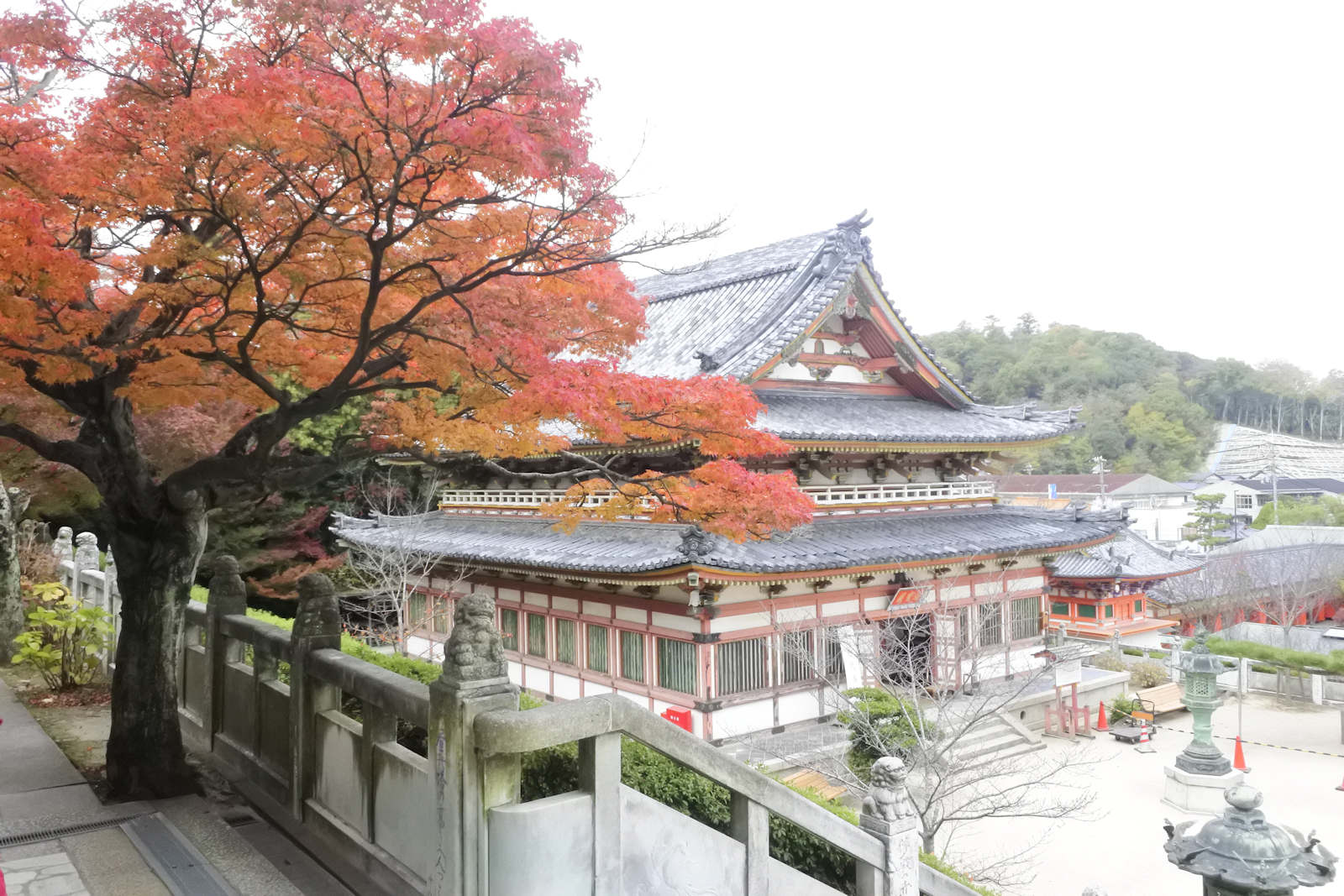 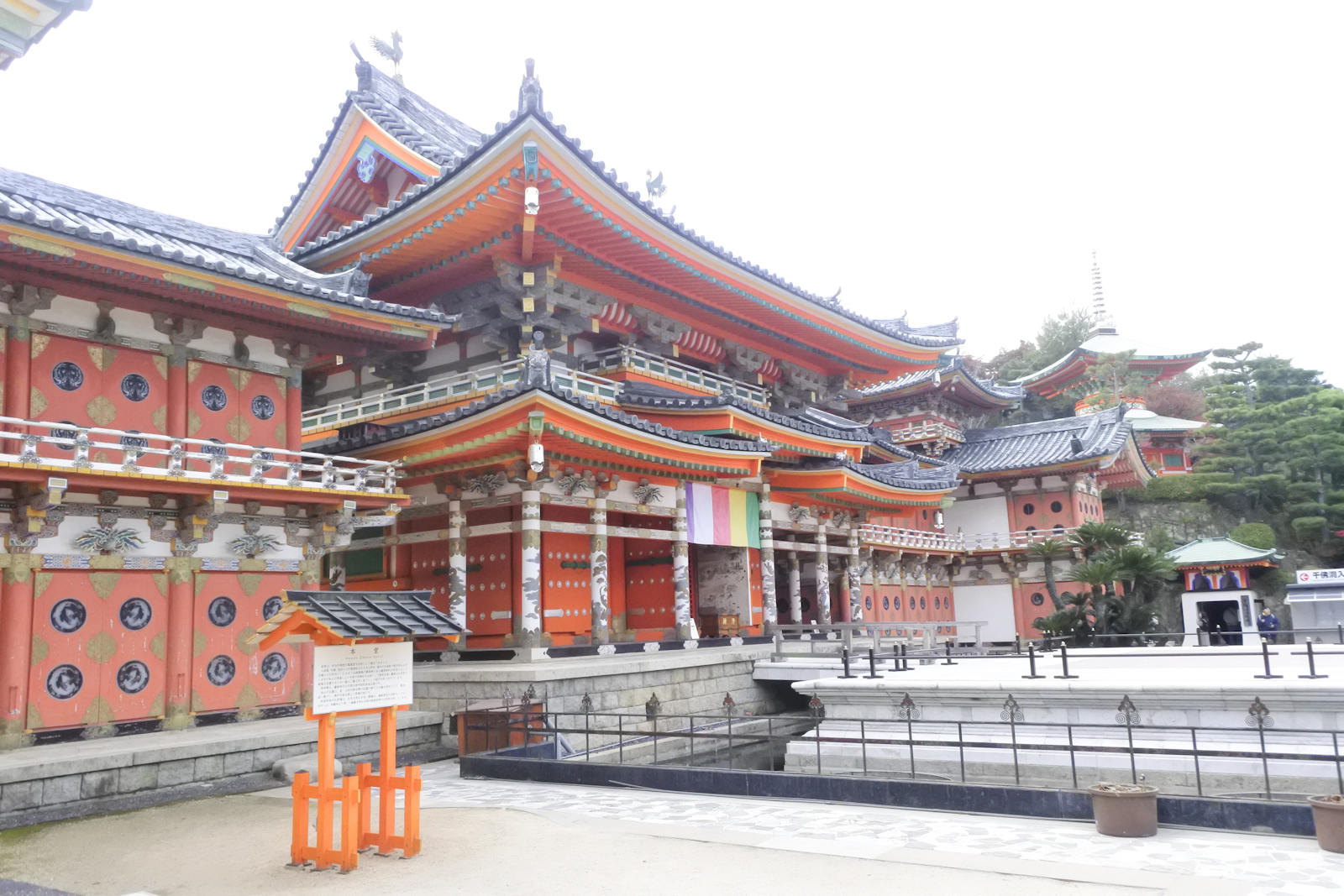 境内の一番奥にある「未来心の丘」は、広島県出身の彫刻家、杭谷一東(くえたに・いっとう)さんが制作した白い大理石の彫刻・モニュメントが立ち並ぶ。大理石は杭谷さんがアトリエを構えるイタリア・カッラーラで採掘されたものを使っており、コンテナ船で生口島まで運ばれてきた。  大理石に囲まれた風景は異国情緒にあふれ、テレビ番組などでもたびたび紹介されてきた。 参拝後は、「しまなみ海道サイクリングロード」へ。耕三寺近くにある瀬戸田町観光案内所で自転車を借りる。 生口島の海岸線沿いを通る生口島循環線を反時計回りに南下。この日は澄んだ青空が広がり、海が綺麗に見えた。道路沿いのところどころににみかんの木が植えられ、枝もたわわに実っていた。 自転車を漕いで渡る最初の橋は生口島~大三島間をつなぐ多々良大橋。この橋の途中で広島県と愛媛県の県境がある。しまなみ海道沿線の大三島より南の島々は愛媛県今治市に属する。 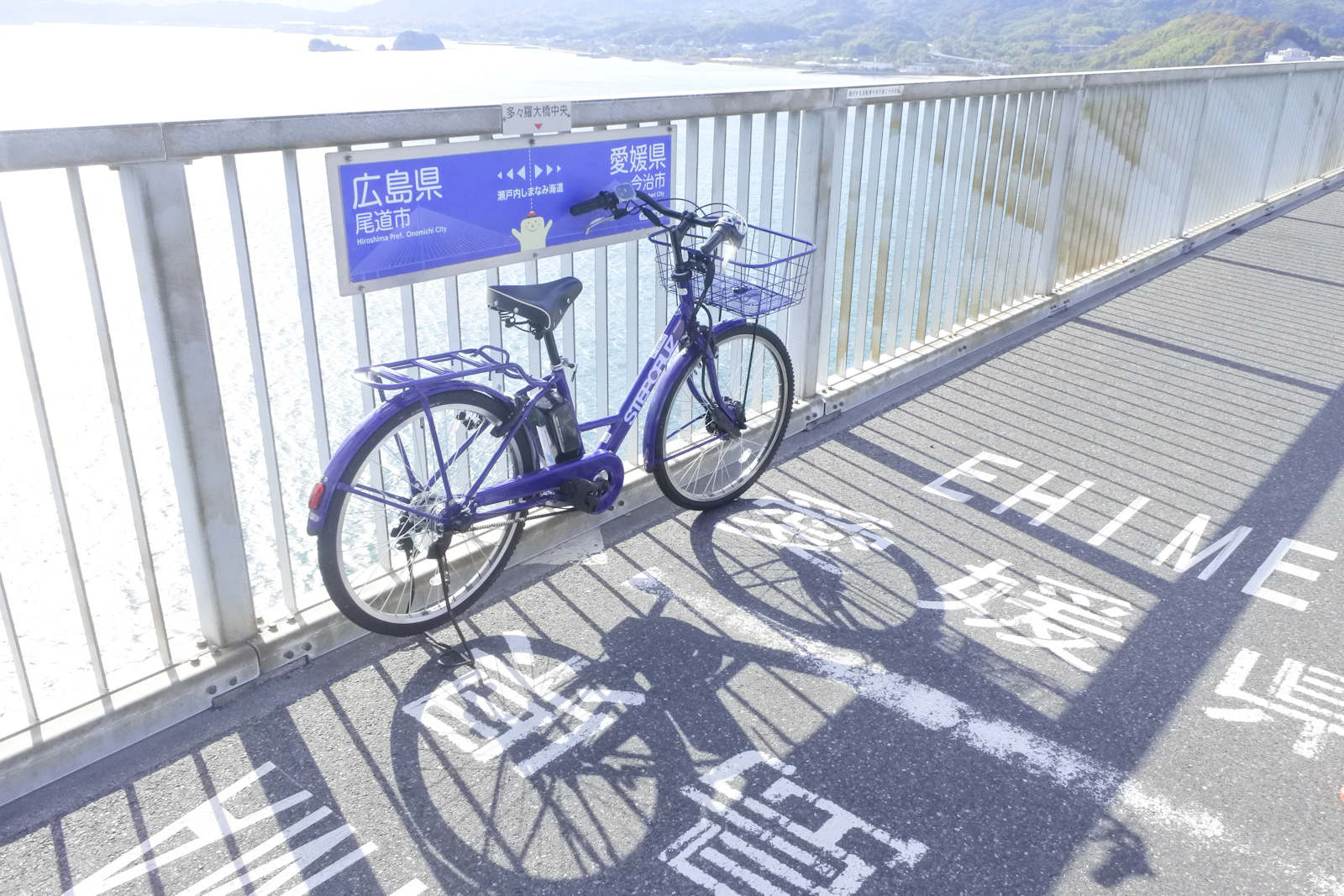 僕にとっては2007(平成19)年以来、16年ぶり2回目の愛媛県来訪である。 多々良大橋を渡り、一般道へのアプローチを下りてすぐにある道の駅多々良しまなみ公園で、ランチタイムも兼ねて休憩を取ることに。 先ほど渡った多々良大橋を多々良しまなみ公園の海辺から望む。 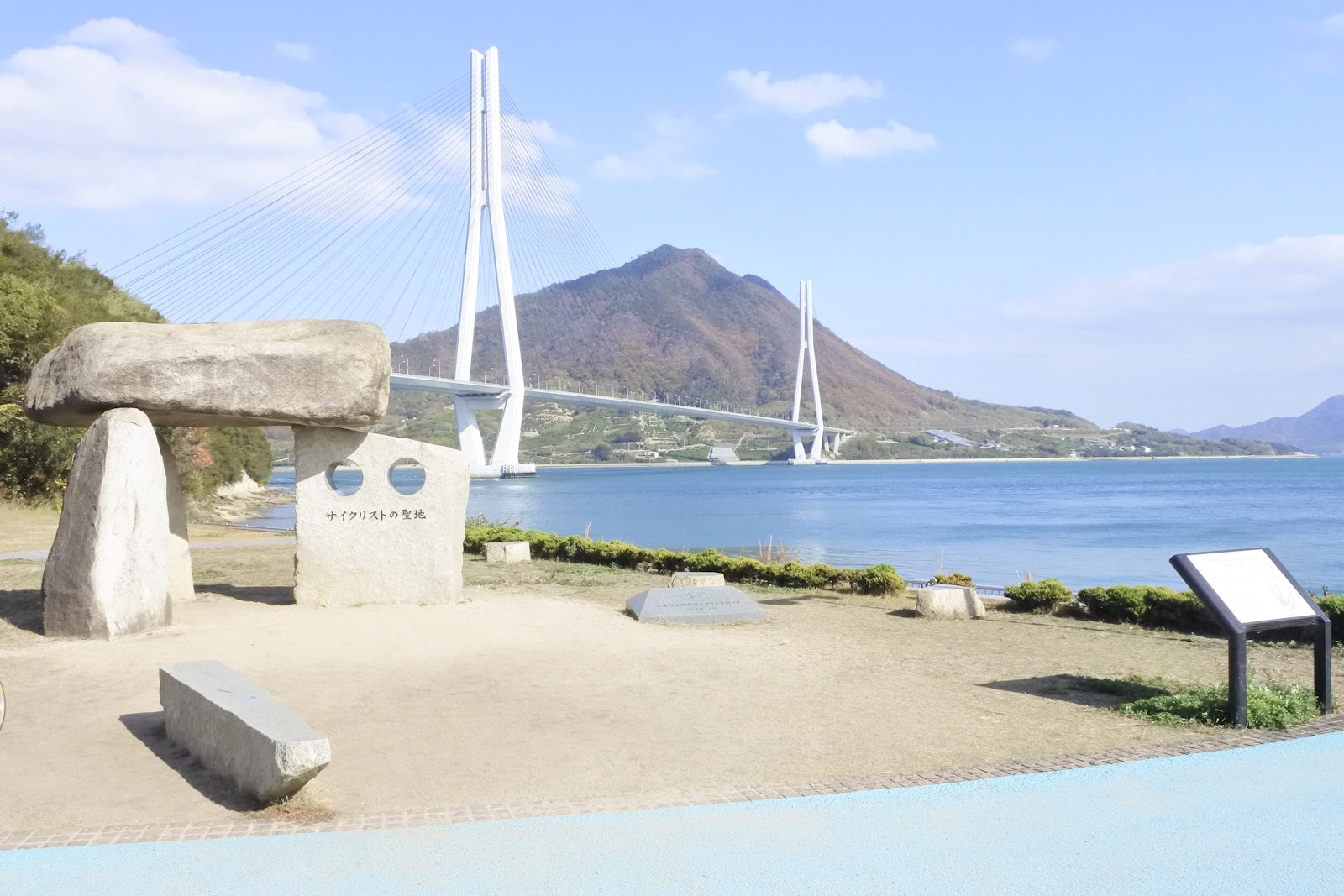 僕はランチに鯛カツバーガーを食べた。 愛媛県では古くからマダイが多く獲れ、養殖も盛ん。マダイをお米と一緒に炊き込んだ、あるいは醤油だれに漬け込んだマダイのお刺身を白ご飯の上に乗せた「鯛めし」も郷土料理として知られている。 マダイの切り身に衣を付けて揚げた鯛カツもご当地グルメの1つ。 鯛カツバーガーを食べ終え、再び自転車を漕ぐ。大三島でも海沿いの大三島環状線を南下。瀬戸港を過ぎた辺りから上り坂となり、その坂道を上がり、鼻栗瀬戸休憩所を過ぎて右に曲がると大三島橋へ。橋を渡り終えると、「伯方の塩」で有名な伯方島に上陸。 アプローチを下りて国道317号(実は生口島循環線と大三島環状線も国道317号の一部)へ。 道なりに進むと道の駅伯方S・Cパークに到着。自転車を漕ぐのはここまで。今治駅行きのバスが来るまでの間に、自転車の返却手続きをして、伯方の塩ソフトクリームを食べながら休憩した。 道の駅近くの伯方島バスストップから乗るバスは、瀬戸内海交通バスの松山・今治〜大三島線の今治駅前行き。 バスはしまなみ海道と島の一般道(国道317号)を行ったり来たりしながら今治方面へと進む。伯方・大島大橋を渡って大島に上陸して最初に停車する大島営業所バス停では運転手さんの「プロの業」を見ることができた。狭い車庫の中にあるバス停に、巧みなハンドルさばきでバスを操り、停車させた。バスは宮窪峠の坂道を走り、大島北部の宮窪地区から南部の吉海地区へ。亀山バス停を過ぎると、大島南インターチェンジからしまなみ海道へ。しまなみ海道最後の橋である来島海峡大橋を渡る。 四国に上陸し、今治北インターチェンジでしまなみ海道を下りる。国道317号をしばらく南東方向に走ると、終点の今治駅前バス停に着いた。 船・自転車・バスを乗り継いで渡るしまなみ海道の旅は無事にゴールできた。しまなみ海道でしかできない自転車で瀬戸内海を渡る体験をできたことが何よりも印象深かった。 On the second day of the travel to Hiroshima, Ehime, and Kagawa, I travelled in the Geiyo Islands along with the Shimanami Kaidō by ship, bicycle, and bus. The Shimanami Kaidō Cycling Road, connecting City Onomichi, Hiroshima Prefecture and Imabari, Ehime Prefecture, goes through nine of the Geiyo Islands in Seto Inland Sea (Mukaishima, Innoshima, Ikuchijima, Ōmishima, Hakatajima, Michikajima, Ōshima, Mushijima, and Umashima) in parallel with the Setouchi Shimanami Kaidō Expressway. The Cycling Road opened in 1999, and the Expressway opened in 2006. The Cycling Road was on world-famous guide books, Lonely Planet and Michelin Guide. In addition, CNN News introduced it as one of the “Most Beautiful Cycling Roads”. From Onomichi Port, I boarded “Citrus” ship to Setoda Port in Ikuchijima. It took about 45 minutes via Innoshima. On Ikuchijima, I visited Kosan-ji Temple, taking a 10-minute walk from the port. The temple was constructed in the Shōwa Period by the first chief priest, Kōzō Kosanji, to show his thanks to his mother. In addition, he wished the temple to become cultural property in Ikuchijima. The “Miraishin-no-oka” garden paved with marble is farthest from the gate (fourth photograph). The marble sculptures and monuments in the garden were created by Itto Kuetani, a sculptor born in Hiroshima. The marbles were mined in Carrara, where his studio is located. The sculptures and monuments were shipped by sea. Some Japanese TV show has introduced the garden as an exotic place. After visiting the temple, I went to the tourist information centre near the temple to rent a bicycle. Once going back to the Setoda port, I cycled southward along the Seto Inland Sea. On my way, I sometimes saw prolific Satsuma mandarin trees. The first bridge during my cycling was the Tatara Ōhashi Bridge between Ikuchijima and Ōmishima. In the middle of the bridge, I passed the border of Hiroshima and Ehime (fifth photograph). The six islands from there (Ōmishima, Hakatajima, Michikajima, Ōshima, Mushijima, and Umashima) are part of Imabari City, Ehime. I dropped a rest stop near the exit of the approach from Tatara Ōhashi Bridge for lunch. Before eating lunch, I photographed the view of the Tatara Ōhashi Bridge (sixth photograph). I chose a hamburger with fried red sea bream. The red sea bream is one of the most popular fish in Ehime Prefecture. People in Ehime have caught and farmed the bream and sometimes eat cooked rice with the bream or raw sliced bream topped with the cooked rice. After finishing lunch, I restarted cycling toward the next island, Hakatajima. In Ōmishima, the cycling road spreads along the sea. A long upward slope started from the Seto Port to the entrance of the approach to the Ōmishima-hashi bridge. Crossing over the bridge, I came to Hakatajima. Going down the approach, I follow the cycling road to a rest stop. I returned the bicycle and ate salt-flavoured twisted ice cream because Hakatajima is famous for the salt industry. After my rest, I got on the bus to Imabari Station at the bus stop near the rest stop. The bus went and came to the Shimanami Kaidō Expressway and the general roads. I saw a skilful steerling at the first bus stop in Ōshima, which stands in the bus garage. A bus driver changed the bus direction, paying attention to not crashing the buses staying in the narrow garage. Going up the Miyakubo Path, the bus went into the south part of the island, the Yoshimi Area. Passing the Kameyama Bus Stop, the bus went up to the Shimanami Kaidō Expressway again to cross the Kurushima Kaikyō Ōhashi Bridge. After crossing the bridge, the bus went down to the general road in Imabari City. Going southeastward, the bus arrived at Imabari Station terminal. My first travel to the Shimanami Kaidō was very impressive, especially cycling. お気に入りの記事を「いいね!」で応援しよう
最終更新日
Jan 16, 2024 10:07:43 PM
コメント(0) | コメントを書く
[鉄道旅の記録] カテゴリの最新記事
|